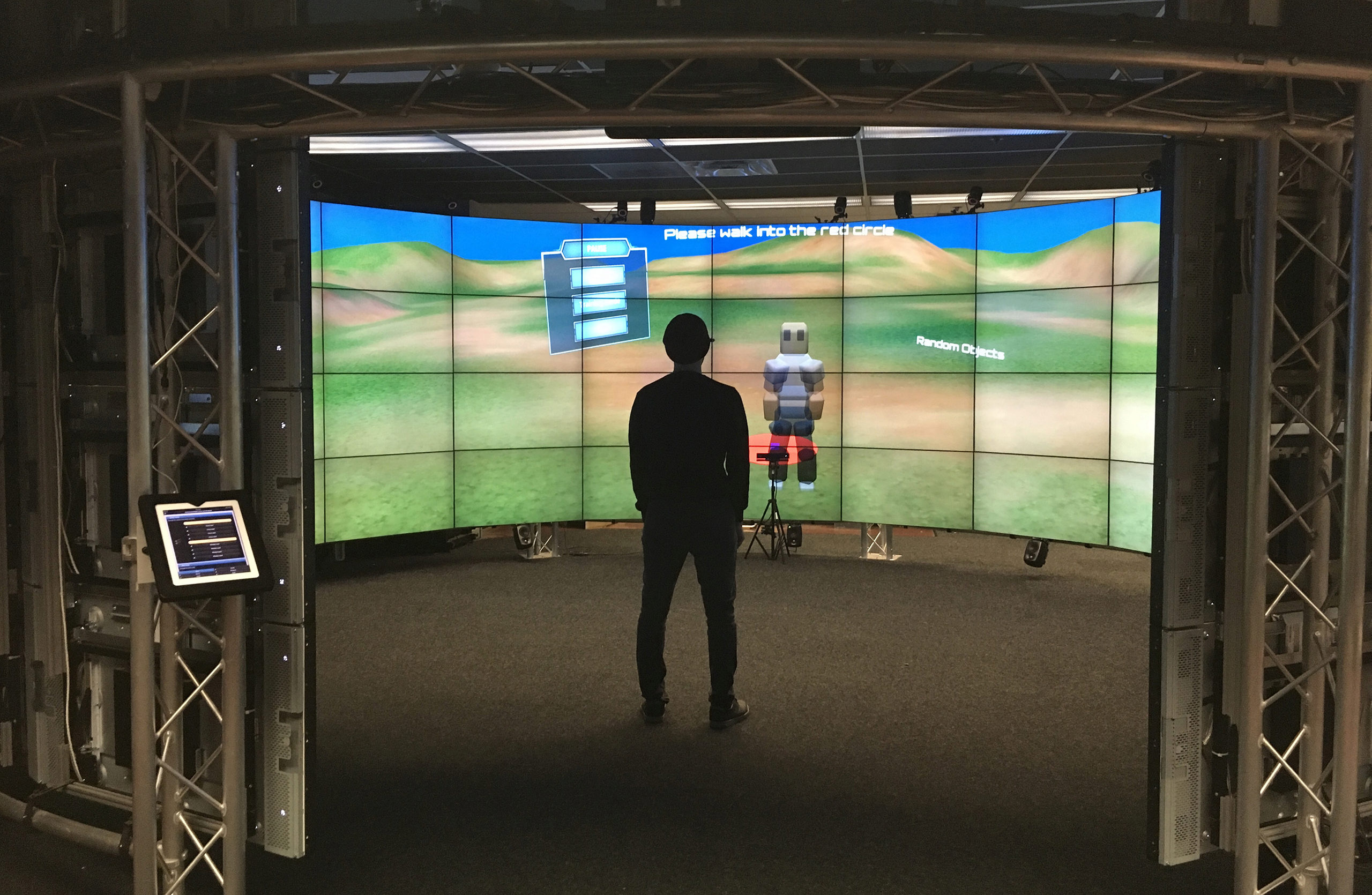User perspective and higher cognitive task-loads influence movement and performance in immersive training environments
August 1st, 2019
Categories: Applications, Human Factors, Software, User Groups, VR, Human Computer Interaction (HCI)

Authors
Trabucco, J., Rottigni, A., Cavallo, M., Bailey, D., Patton, J., Marai, G.E.About
Background: In virtual reality (VR) applications such as games, virtual training, and interactive neurorehabilitation, one can employ either the first-person user perspective or the third-person perspective to perceive the virtual environment; however, applications rarely offer both perspectives for the same task. We used a targeted-reaching task in a large-scale virtual reality environment (N = 30 healthy volunteers) to evaluate the effects of user perspective on the head and upper extremity movements, and on user performance. We further evaluated how different cognitive challenges would modulate these effects. Finally, we obtained the user-reported engagement level under the different perspectives.
Results: We found that first-person perspective resulted in larger head movements (3.52 ± 1.3m) than the third-person perspective (2.41 ± 0.7m). First-person perspective also resulted in more upper-extremity movement (30.08 ± 7.28m compared to 26.66 ± 4.86m) and longer completion times (61.3 ± 16.4s compared to 53 ± 10.4s) for more challenging tasks such as the “flipped mode”, in which moving one arm causes the opposite virtual arm to move. We observed no significant effect of user perspective alone on the success rate. Subjects reported experiencing roughly the same level of engagement in both first-person and third-person perspectives (F(1.58) = 0.9, P = .445).
Conclusion: User perspective and its interaction with higher-cognitive load tasks influences the extent of movement and user performance in a virtual theater environment, and may influence the choice of the interface type (first or third person) in immersive training depending on the user conditions and exercise requirements.
Keywords: User perspective, Engagement, CAVE2
Resources
URL
Citation
Trabucco, J., Rottigni, A., Cavallo, M., Bailey, D., Patton, J., Marai, G.E., User perspective and higher cognitive task-loads influence movement and performance in immersive training environments, BMC Biomedical Engineering, pp. 1-14, August 1st, 2019. https://doi.org/10.1186/s42490-019-0021-0